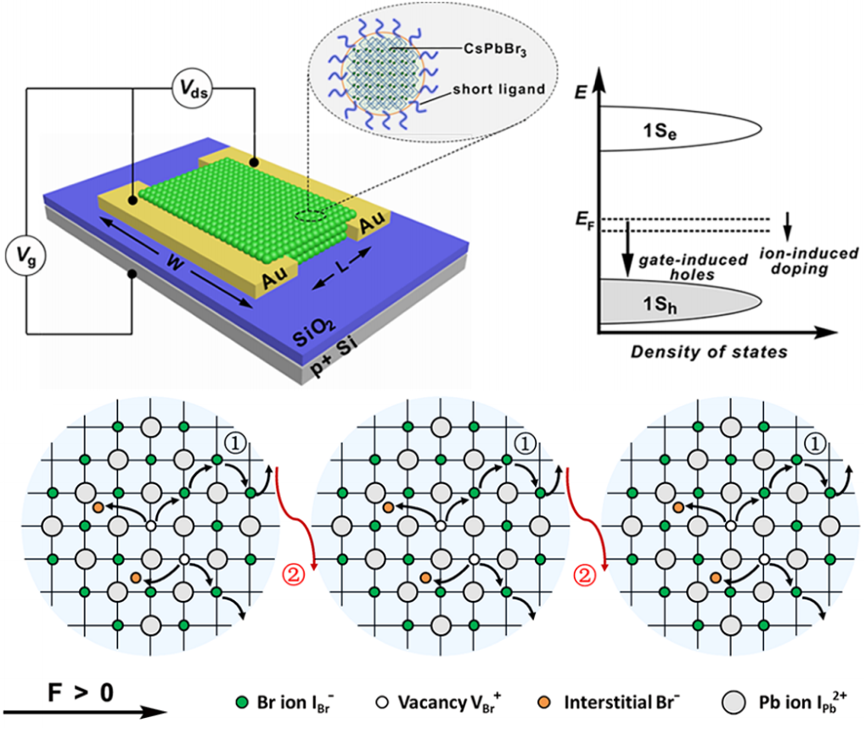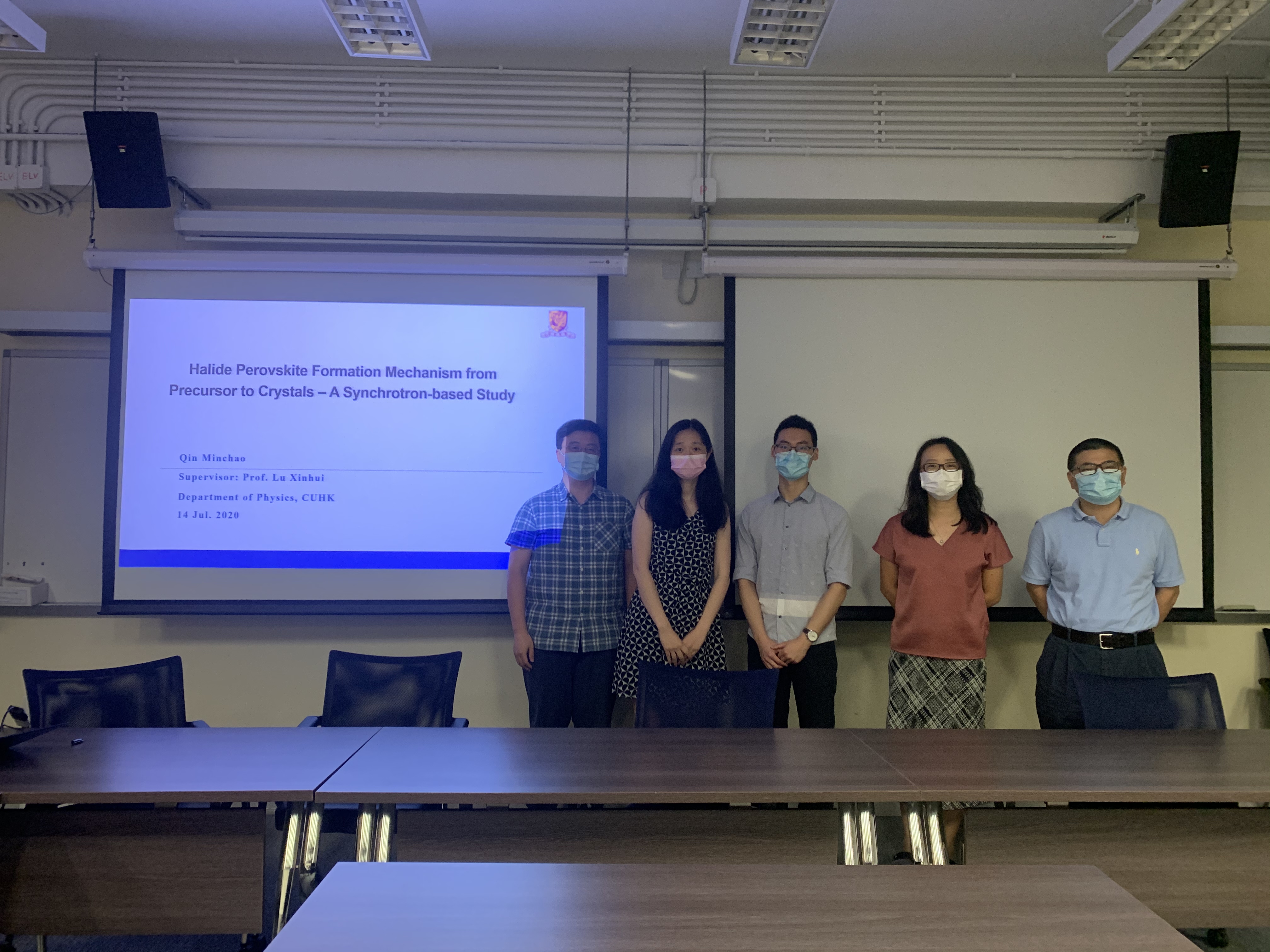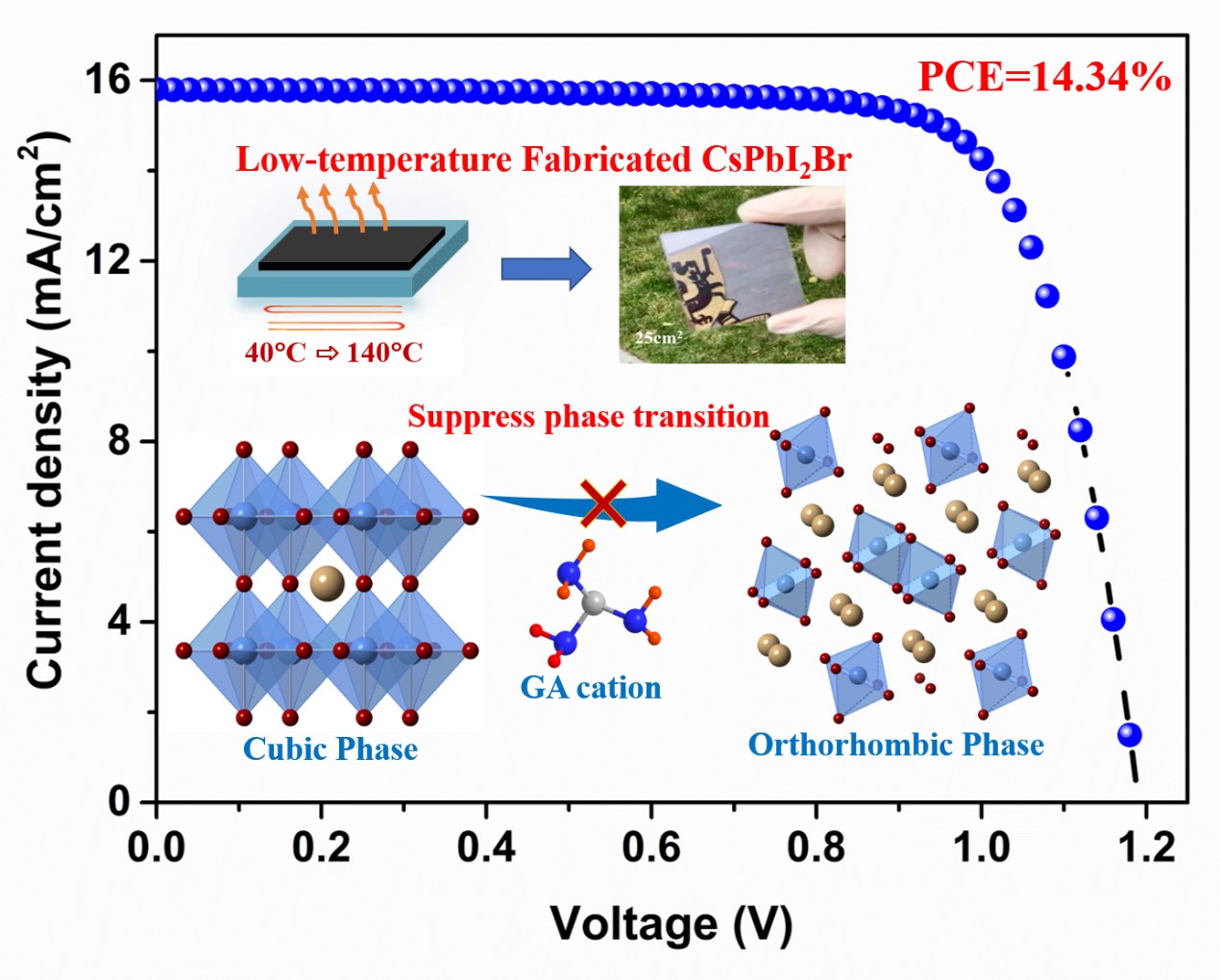Prof Lu is named “Highly Cited Researcher 2020” in Cross-Field by Clarivate.
Research Highlights: Ternary Blending Driven Molecular Reorientation of Non-Fullerene Acceptor IDIC with Backbone Order

The bulk-heterojunction morphology of organic solar cells is well recognized to be critical to the device performance and has received extensive research efforts in developing viable morphology tuning strategies. In this work, we present a morphology tuning approach for the molecular packing orientation, that is, through the ternary mixing of a donor polymer FTAZ with two distinctly oriented non-fullerene acceptors, IDIC and INIC3.… Read More
Recent News: Welcome Luhang Xu to join our group!
Luhang Xu joins our group as a graduate student majoring in MSE.
Research Highlights: Precise Control of Perovskite Crystallization Kinetics via Sequential A-site Doping

Two-step fabricated FAPbI3-based perovskites have attracted increasing attention because of their excellent film quality and reproducibility. However, the underlying film formation mechanism remains mysterious. In this work, the crystallization kinetics of a benchmark FAPbI3-based perovskite film with sequential A-site doping of Cs+ and GA+ has been revealed by in situ X-ray scattering and first-principles calculations.… Read More
Research Highlights: Understanding Charge Transport in All-Inorganic Halide Perovskite Nanocrystal Thin-Film Field Effect Transistors

Charge transport mechanism in nanocrystal (NC) films is known to be very different from that in the bulk films. The charge transport in halide perovskite-NC films is further complicated due to the ionic nature of perovskites. In this work, we fabricate all-inorganic CsPbBr3 NCs terminated with short ligands into field effect transistors, which provides a facile platform to study the charge transport mechanism systematically.… Read More
Recent News: Welcome Pok Fung Chan to join our group!
Pok Fung Chan joins our group as a graduate student majoring in PHY. And he is awarded Hong Kong PhD Fellowship, Congratulations!
Recent News: Minchao Qin successfully passed the defense!

On July 14th, 2020, Minchao Qin successfully passed the defense! Congratulations, Dr. Qin!
Recent News: Welcome Heng Liu to join our group!
Heng Liu joins our group as a graduate student majoring in MSE.
Research Highlights: Guanidinium Doping Enabled Low-temperature Fabrication of High-efficiency All-inorganic CsPbI2Br Perovskite Solar Cells

All-inorganic perovskites, such as CsPbI2Br, have attracted increasing attention because of its potentially better thermal stability. However, a high-quality CsPbI2Br perovskite film usually requires a high fabrication temperature (> 200 ºC) and suffers from unwanted phase transition from a photo-active cubic phase to a photo-inactive orthorhombic phase.
In this work, we present a brand-new means to simultaneously stabilize the photo-active cubic phase and lower the fabrication temperature of perovskite solar cells with guanidinium cations (GA) doping.… Read More
Recent News: Welcome Xiao Wu to join our group!
Xiao Wu joins our group as a graduate student majoring in MSE.
